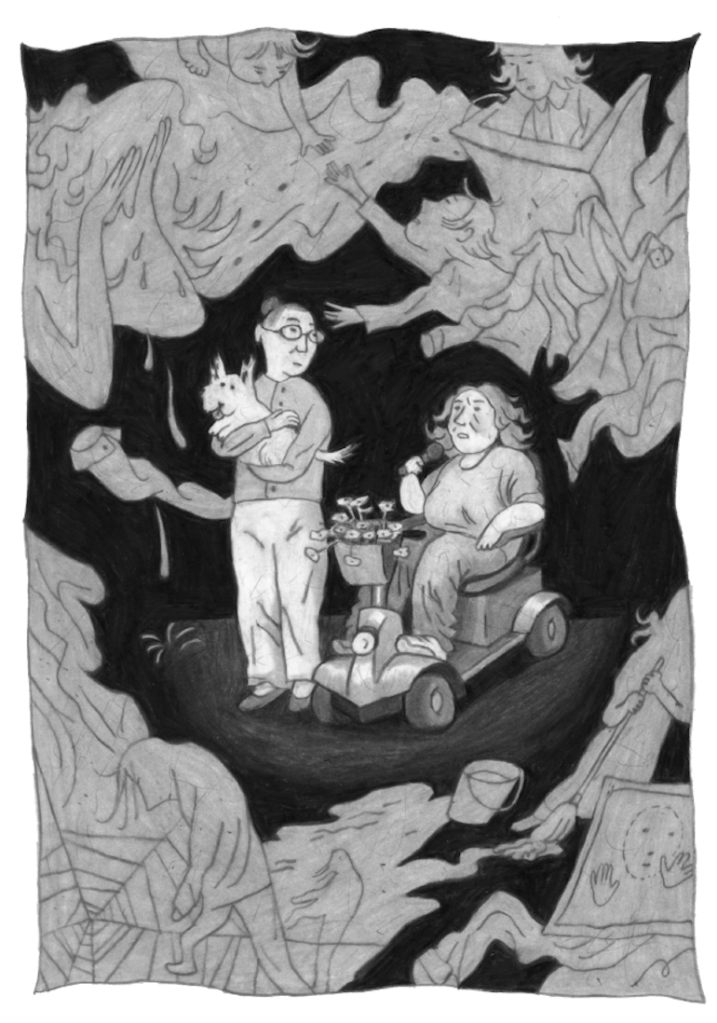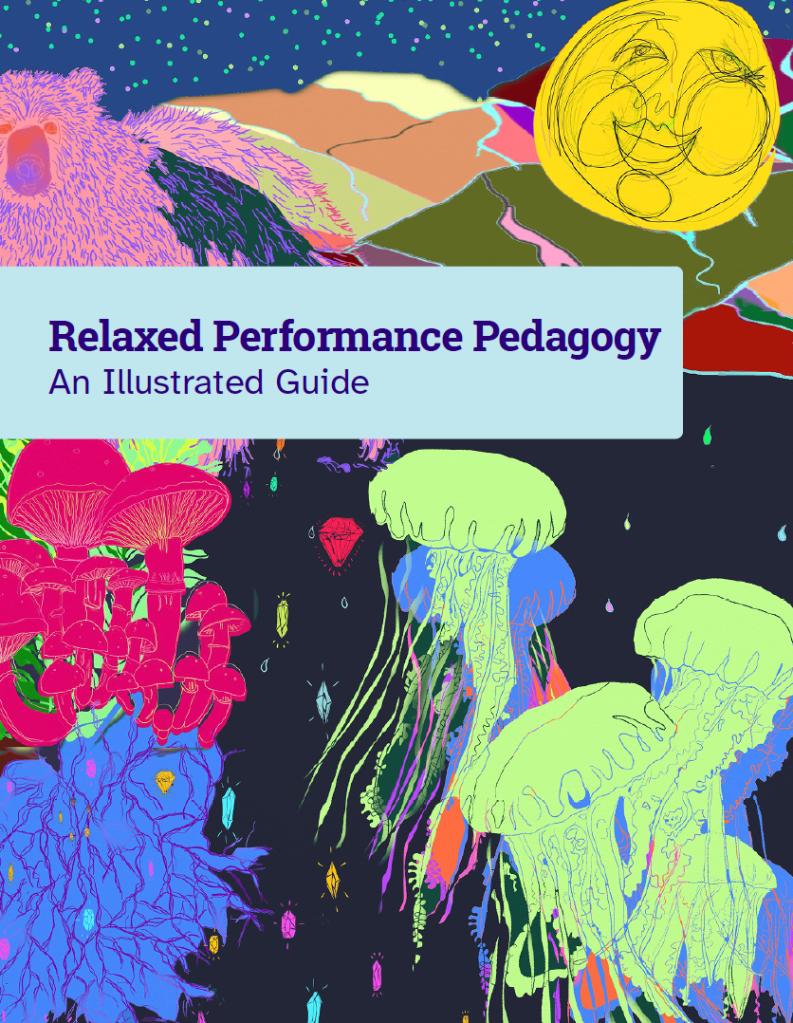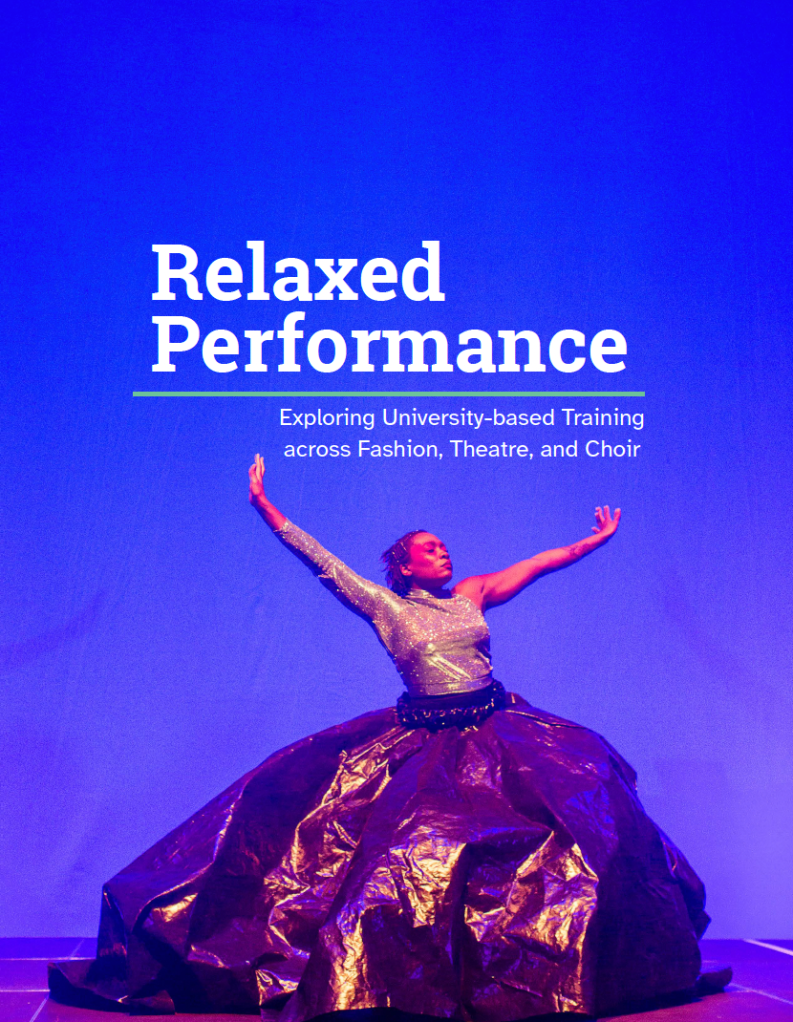
Time Travel Wheels: A pedagogical guide
Chatsick, J., Collins, K., & Zbitnew, H. (2023). Time Travel Wheels: A pedagogical guide.
This pedagogical tool offers a guide to the novella, Time Travel Wheels, and to the history of institutionalization of people labelled with intellectual and developmental disabilities at the Huronia Regional Centre in Orillia, Ontario. With three distinct levels of engagement, beginner, intermediate and in-depth, this guide supports discussion and activities in order to engage with difficult histories.

Relaxed Performance: An Illustrated Guide
Collins, K., Jones, C.T. & Rice, C. (2022) Relaxed Performance: An Illustrated Guide. Research Report. Re•Vision: The Centre for Art and Social Justice, University of Guelph.
This tool builds on the Relaxed Performance training modules developed by the British Council. It also draws on the findings from Relaxed Performance research by the British Council and Bodies In Translation (BIT), including the 2019 Relaxed Performance: Exploring Accessibility in the Canadian Theatre Landscape and the 2022 Relaxed Performance: Exploring University-based Training Across Fashion, Theatre and Choir reports.

Relaxed Performance: Exploring University-based Training Across Fashion, Theatre and Choir
Jones, C.T., Rice, C., Collins, K., & Dion, S. (2022). Relaxed Performance: Exploring University-based Training Across Fashion, Theatre and Choir. Research Report. Re•Vision: The Centre for Art and Social Justice, University of Guelph.
Over the course of the 2019—2020 academic year, the British Council and Bodies in Translation (BIT) at the Re•Vision Centre for Art and Social Justice at the University of Guelph partnered with three universities in Turtle Island, in the province known as Ontario, to introduce Relaxed Performance (RP) training modules into existing fashion studies, theatre, and choral studies curriculums. Through this RP Curriculum Pilot project, up to 240 students at X University, York University, and the University of Guelph, respectively, learned best practices and how to incorporate RP principles into their mid-term and final projects, which were open to the public. This report chronicles the RP Curriculum Pilot, a project built on findings from the 2019 “Relaxed Performance: Exploring Accessibility in the Canadian Theatre Landscape” report, which pointed to the promise of disability justice–led RP training and delivery for improv- ing accessible performances. Over the course of this training, BIT researchers employed a mixed methods framework using surveys, interviews, participant observation, and analysis of materials produced through the RP training. Through this data generation, we gained insight into RP as a vibrant, creative intervention with roots in European theatre–based disability activism. Each discipline engaged in RP for different reasons and developed its own set of strategies around making a crip fashion show, a relaxed theatre production, and a choral ensemble performance more accessible; all of these performances reflect RP’s growing application across sectors. The work of RP is community-based and must be community-led, beginning with the meaningful inclusion of disabled people as RP trainers, also known as Access Activators. Following the guiding principles of disability justice, RP’s community-based approach must preserve and nurture its vitality by expanding its context-specific relationships with those who report being underrepresented in RP, specifically Deaf and Indigenous communities. Additionally, it is clear that as a justice-oriented praxis, RP must continue to strive to respond to and develop context- and industry-specific “vital practices” that will vary across performances as RP continues to grow, becoming transdisciplinary and increasingly transnational in scope.